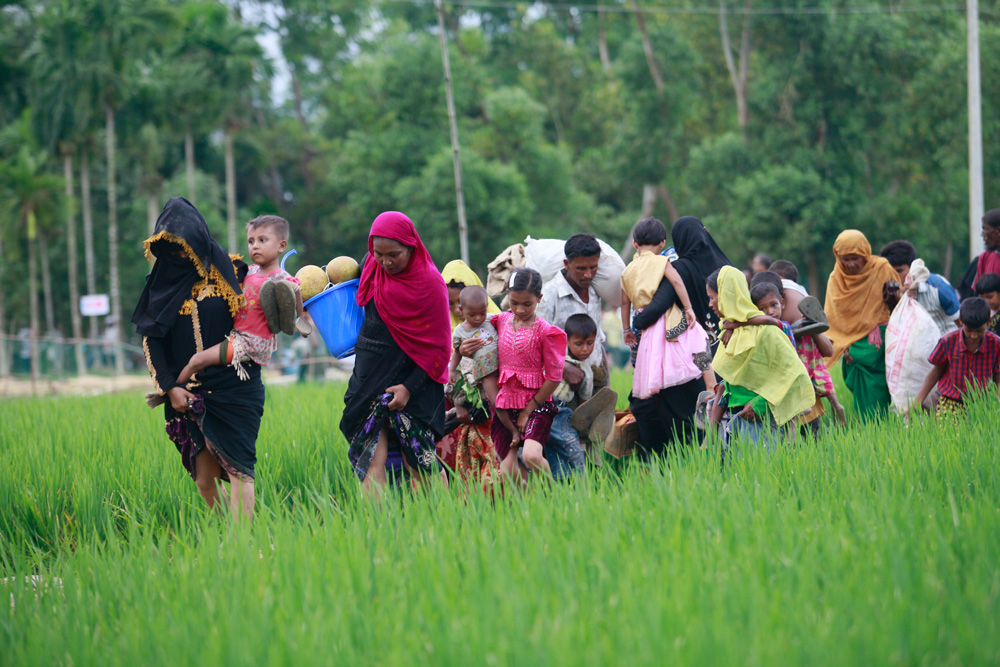The news about migration has been impossible to ignore. It is far from a modern phenomenon and has been happening throughout history. However, in the last 25 years global migration rates have increased, as a share of the world population from 2.9% to 3.3%. Fuelled by the recent and ongoing conflicts as well as by the changing climate, this increase is noticeable. Many development actors are trying to understand how migration affects their mandates. It is a global learning process and at the moment there are more questions than answers, but it’s clear that no actor nor state can address migration alone.
On the 23rd of January 2019 in Stockholm SIANI gathered representatives from the government and international development community as well as from business, non-profit and research organisations to discuss entry points for collective action on migration. Keynotes by experts from Stockholm International Peace Research Institute (SIPRI), Swedish International Development Agency (Sida), Nordic Africa Institute (NAI) and County board of Västra Götaland set the scene and ignited discussions. Here is a rundown of key messages from the day. Watch videos from the event.
1. Migration is a positive force
Migration is very diverse and goes far beyond refugees we see in the media. People migrate in pursuit of a better life and, if given an opportunity, create better living conditions for themselves, contributing to local economy and society. “Migration is not a crisis, it is not a problem we must regulate our way out of. It is an indispensable resource that we should tap into. And we should not identify those who move in the role of migrants, they are people with other political and social dimensions and can contribute to society,“ says Jesper Bjarnesen, Senior Researcher at NAI. He suggests that international and national actors should focus more on developing and protecting rights of workers and creating better working conditions and opportunities for those who migrate, rather than strictly regulating freedom of movement.
Throughout the human history immigrants brought innovation and creativity to host countries, “migrant are development entrepreneurs,” says Bjarnesen. One such example is Astrid Aster Asgedom, Water Resources Protection Officer at the County board Västra Götaland who spoke at the SIANI event. She moved to Sweden from Ethiopia, fell in love with forest and started a Eco Agroforestry, an initiative and a re-creation center that now helps the newly arrived refugees to integrate into society. There is even a branch back in Ethiopia, working with afforestation and livelihoods.
2. Using hunger as a weapon of war is a crime against humanity
Sigrún Rawet, the Deputy Director at SIPRI, who previously worked with the Ministry of Foreign Affairs, Sweden told about her work with the Conflict and Hunger Resolution (2417) adopted by the UN Security Council in 2018. This resolution was developed under the Swedish Presidency of the Council. The process was also going in parallel with the international response to “the four famines” – conflict inflicted humanitarian disasters in Yemen, South Sudan, Somalia and Nigeria, where hunger destroyed the lives millions of people.
“With adoption of this resolution, for the first time, the connection between conflict and hunger was acknowledged on the highest political level,” says Rawet. The resolution unequivocally condemns starvation as a method of warfare, includes an early warning and prevention system for conflict induced food insecurity as well as a toolkit for the security council to facilitate humanitarian action.
3. Building partnerships is key and needs to be done at all levels
“Safe and orderly migration requires collective action; we all have different roles and we all can contribute from different perspectives, in line with the Global Compact for Migration – the first-ever UN global agreement on a common approach to international migration,” says Ingela Winter-Norberg, Senior Policy Specialist on Migration and Development at Sida.
According to Winter-Norberg, Sida is working with migration by integrating it into bilateral strategies with countries, prioritizing education, human rights, and considerations of climate change and environmental risks as well as creating sustainable solutions for refugees and migrants in protracted crisis. One example of this work is a collaboration with the African Union – improving the capacity of the member states to fulfil their commitments on labour migration. Another areas of work include support of African governments in enhancing migration statistics, livelihood improvement projects in collaboration with FAO, as well as provision of financial inclusion and micro-finance in partnership with UNHCR and Grameen Credit Agricole Foundation.
